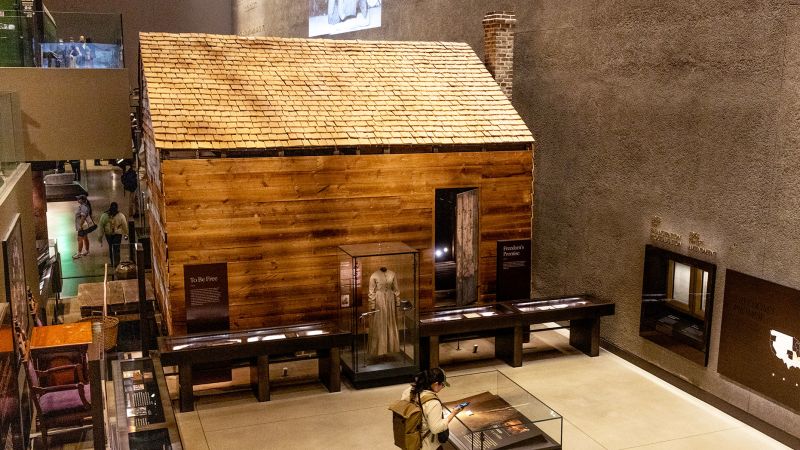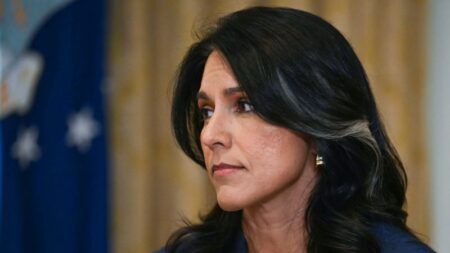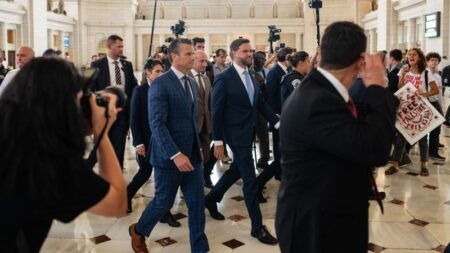In a recent development characterized by a surge in political tensions, President Donald Trump has intensified his endeavor to reshape cultural institutions to align more closely with his political objectives. This initiative was particularly evident in a series of statements made by Trump, in which he criticized various museums, including the renowned Smithsonian Institution, for their emphasis on the darker chapters of American history, such as slavery. Within his discourse, Trump alleged that these institutions were excessively focused on portraying “how bad slavery was” rather than celebrating the achievements and successes of America.
Trump communicated his concerns through a post on Truth Social, where he instructed his legal team to conduct a thorough review of museums nationwide. He likened this undertaking to his administration’s previous actions against universities across the United States, suggesting a broader campaign to influence educational discourse. His critique specifically targeted the Smithsonian, which he described as “OUT OF CONTROL,” claiming that its narratives fail to convey America’s success and positive future prospects. This proclamation came shortly after the White House announced a significant review of the Smithsonian Institution, which oversees many of the nation’s major public museums.
The letter outlining this initiative, penned by three high-ranking Trump aides, was addressed to Lonnie Bunch III, the Secretary of the Smithsonian Institution. It articulated the objective of ensuring that the institution’s exhibitions celebrate American exceptionalism and eliminate any partisan or divisive narratives. The review is expected to scrutinize a wide array of elements related to public-facing content, the curatorial processes involved in exhibit selection, as well as existing materials and collections.
Lonnie Bunch, who has held his position since 2019 and is recognized as the first African American to do so, has passionately advocated for the importance of informing the public about slavery through the National Museum of African American History and Culture. In a recent interview, Bunch emphasized that understanding America’s history necessitates confronting the “horrors of slavery,” underscoring the critical role museums play in educating the public.
Despite the alleged objectives of the review, critics, including museum ethics experts like Janet Marstine, contend that Trump’s demands set an unrealistic expectation for the Smithsonian. They maintain that such comprehensive evaluations and adjustments are unfeasible within the constrained timelines typically associated with museum planning and development. The requirement for extensive documentation, including internal communications and exhibit details, has raised concerns regarding the practicality and motivation behind the directive.
The Smithsonian Institution has opted to refrain from commenting directly on Trump’s statements. However, a White House representative mentioned the administration’s intention to explore all possible avenues for removing what they consider “Woke” ideologies from the institution. There is an overarching trend of Trump targeting higher education with similar scrutiny, evidenced by the administration’s actions to withdraw federal funding from universities perceived to breach certain political or ideological standards.
Additionally, the Trump administration’s influence on cultural narratives extends beyond Washington, D.C. For example, significant federal grants previously allocated to museums and arts programs have been revoked, severely impacting numerous cultural initiatives across the country. Although Trump has previously expressed admiration for the Smithsonian, particularly the National Museum of African American History and Culture, his current approach appears less conciliatory.
Earlier efforts by Trump included an executive order placing Vice President JD Vance in charge of monitoring government spending on exhibits that do not align with the administration’s agenda. This directive emphasized that museums should be environments for learning, free from politically charged narratives. In the wake of these developments, the Smithsonian has reiterated its commitment to presenting unbiased historical facts while conducting its own internal reviews for maintaining neutrality.
The Smithsonian Institution, a testament to American cultural heritage established by the estate of British scientist James Smithson, faces a complex challenge given its governance structure and the intricate relationship with federal oversight. The ongoing debate surrounding Trump’s attempts to control narratives within these cultural institutions continues to ignite discussions about the role of museums in society, the implications of curatorial decisions, and the significance of historical accuracy versus political narratives. The broader impact of such a campaign remains to be seen as it unfolds within the contentious landscape of contemporary American politics.











